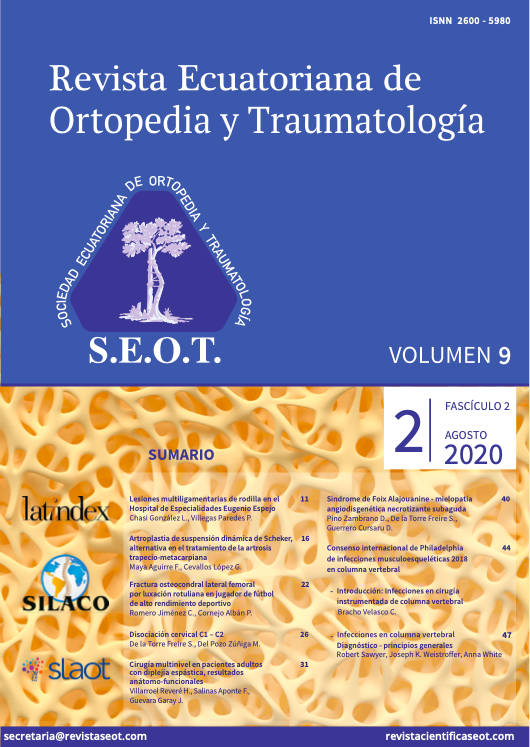Síndrome de Foix Alajouanine - mielopatía angiodisgenética necrotizante subaguda
Main Article Content
Abstract
Spinal Dural arteriovenous fistulas are a rare cause of subacute necrotizing angiodysgenetic myelopathy. Due to the slow clinical presentation, these lesions can go unnoticed for a long time and even lead to erroneous diagnoses with unnecessary treatments and interventions, which can aggravate symptoms and outcomes.
The symptoms that are most frequently described have a slow evolution, such as neurogenic claudication, paresthesia, among other symptoms before paraplegia or bladder and anal sphincter dysfunction. Although they may have an abrupt presentation with paraplegia and subarachnoid hemorrhage. The diagnosis cannot always be demonstrated by images, so, if you have the symptoms previously indicated it should be considered highly suspicious as a differential diagnosis. If Spinal Dural arteriovenous fistulas is demonstrated by images, the diagnosis is confirmed.
This is a case report of a 27-year-old male with no history of previous disease, with suspicion of dural fistula-like arteriovenous malformation, although it is rare in people under 50 years of age, its etiology is unknown.
After the diagnosis was made, this fistula was tried to be managed with an obliteration endovascularly, but due to the great vascular tortuosity, it was not possible. An open surgical procedure was required with a posterior approach for definitive occlusion.
Article Details

This work is licensed under a Creative Commons Attribution-NonCommercial-NoDerivatives 4.0 International License.

